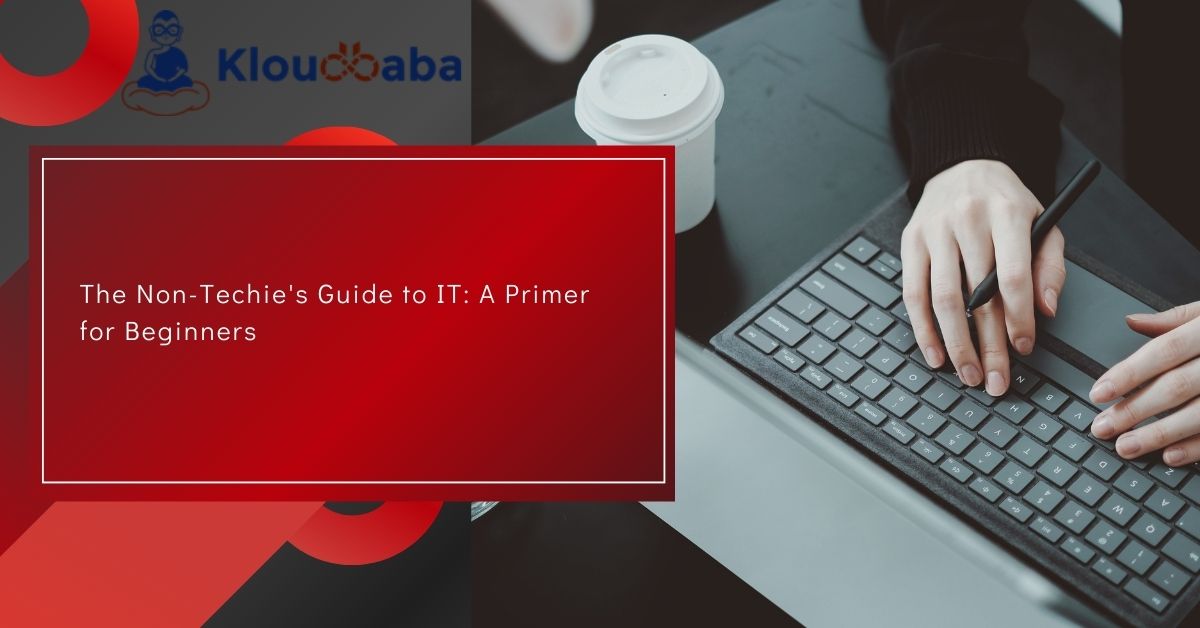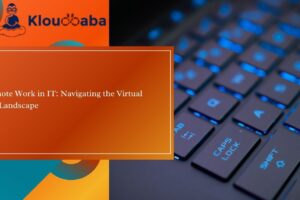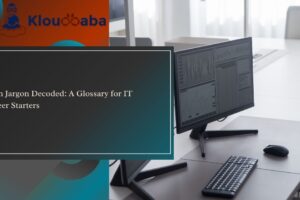
The Non-Techie’s Guide to IT: A Primer for Beginners
The Non-Techie’s Guide to IT: A Primer for Beginners- Are you someone who feels overwhelmed by the complexities of Information Technology (IT)? Fear not, because this guide is tailor-made just for you. Welcome to “The Non-Techie’s Guide to IT,” where we demystify the world of IT in a beginner-friendly manner. In today’s digital age, understanding the basics of IT is essential, whether you’re a student, a professional in a non-technical field, or simply someone curious about how technology shapes our world. Join us as we embark on a journey to unravel the mysteries of IT, empower you with knowledge, and equip you to navigate the tech landscape with confidence.
Also Check: Demystifying Coding Bootcamps: Are They Worth It for Job Seekers?
What is IT?
Embarking on our journey into the realm of Information Technology (IT), let’s begin by unraveling the very essence of IT itself. Here’s what you need to know:
- Definition of IT: IT, short for Information Technology, encompasses the use of computers, software, networks, and other technologies to manage and process information.
- Significance of IT: In today’s interconnected world, IT plays a pivotal role in nearly every aspect of our lives, from communication and entertainment to business operations and healthcare.
- Key Components of IT: At its core, IT revolves around the management, storage, retrieval, and transmission of data. Understanding the basics of hardware, software, networks, and data is fundamental to grasping IT concepts.
- Impact of IT: IT innovations have revolutionized industries, streamlined processes, and transformed the way we live and work. From smartphones and social media to cloud computing and artificial intelligence, IT continues to shape the world around us.
By laying the foundation with a clear understanding of what IT entails, we can now delve deeper into its core concepts and practical applications. Join us as we embark on an enlightening journey through the world of IT, designed especially for non-techies like you.
Core Concepts of IT
Now that we’ve established a foundational understanding of IT, let’s delve into its core concepts to broaden our knowledge:
- Cybersecurity: Cybersecurity is the practice of protecting computer systems, networks, and data from digital threats such as hackers, viruses, and malware. It encompasses measures such as firewalls, antivirus software, and encryption to safeguard sensitive information.
- Cloud Computing: Cloud computing refers to the delivery of computing services—including storage, processing power, and software—over the internet. It offers scalability, flexibility, and cost-effectiveness, enabling organizations to access resources on-demand without the need for physical infrastructure.
- Data Management: Data management involves the organization, storage, retrieval, and analysis of data to derive meaningful insights and support decision-making. It encompasses data storage technologies, databases, data governance, and data analytics tools.
- Networking: Networking is the practice of connecting computers and other devices to share resources and communicate with each other. It includes concepts such as protocols, IP addresses, routers, and switches, as well as wireless technologies like Wi-Fi and Bluetooth.
By familiarizing ourselves with these core concepts of IT, we gain a deeper appreciation for the intricate ecosystem of technology that powers our digital world. In the next section, we’ll explore common IT technologies and terminologies to further enrich our understanding.
Also Check: Unlocking Your Potential: The Power of Networking in IT Careers
Common IT Technologies and Terminologies
As we continue our journey through the world of IT, let’s familiarize ourselves with some common technologies and terminologies you’re likely to encounter:
- Servers: Servers are powerful computers that store, process, and manage data, applications, and resources. They serve as the backbone of IT infrastructure, providing services such as hosting websites, managing databases, and facilitating communication.
- Databases: Databases are organized collections of data stored electronically. They allow for efficient data retrieval, manipulation, and analysis, supporting a wide range of applications and use cases. Common database systems include MySQL, Oracle, and Microsoft SQL Server.
- Operating Systems: An operating system (OS) is software that manages computer hardware and provides a platform for running applications. Popular operating systems include Microsoft Windows, macOS, and various distributions of Linux.
- Programming Languages: Programming languages are used to write instructions that computers can understand and execute. Examples include Python, Java, JavaScript, C++, and Ruby. Each language has its own syntax, rules, and applications.
- Software Applications: Software applications, or simply “apps,” are programs designed to perform specific tasks or functions. They range from productivity tools like Microsoft Office and Adobe Photoshop to communication apps like Slack and Zoom.
- Networking Protocols: Networking protocols define rules and conventions for communication between devices on a network. Examples include TCP/IP (Transmission Control Protocol/Internet Protocol), HTTP (Hypertext Transfer Protocol), and DNS (Domain Name System).
By familiarizing ourselves with these common IT technologies and terminologies, we gain a better understanding of the tools and systems that underpin modern computing. In the next section, we’ll explore the benefits of acquiring IT knowledge, even for non-techies like us.
Benefits of Understanding IT
Now that we’ve explored the fundamental concepts and technologies of IT, let’s examine the benefits of acquiring IT knowledge, even for non-techies:
- Empowerment: Understanding IT empowers individuals to navigate the increasingly digital world with confidence. It enables us to make informed decisions about technology use, security practices, and digital literacy.
- Enhanced Productivity: IT literacy enhances productivity by enabling us to leverage technology tools and resources more effectively. From streamlining workflows to automating repetitive tasks, IT knowledge can significantly boost efficiency in both personal and professional settings.
- Improved Communication: IT proficiency facilitates communication and collaboration in today’s interconnected world. Whether it’s through email, messaging apps, or video conferencing platforms, understanding IT enables us to connect with others more seamlessly.
- Career Opportunities: In a job market increasingly driven by technology, IT literacy opens doors to a wide range of career opportunities. Even for non-technical roles, basic IT skills are often considered essential, and specialized IT knowledge can differentiate candidates in competitive job markets.
- Problem-solving Skills: IT knowledge equips us with valuable problem-solving skills that transcend the realm of technology. The logical thinking, analytical reasoning, and troubleshooting abilities developed through IT literacy are applicable in various domains and situations.
- Adaptability: In today’s rapidly evolving technological landscape, IT literacy fosters adaptability and lifelong learning. By staying abreast of emerging technologies and trends, we can adapt to changes more effectively and remain competitive in an ever-changing world.
By recognizing the myriad benefits of understanding IT, we empower ourselves to embrace technology with confidence and harness its potential to improve our lives. In the final section of our guide, we’ll explore practical tips for non-techies to embark on their journey of IT learning and discovery.
Also Check: Breaking into IT: Essential Soft Skills for Success
Practical Tips for Learning IT
Now that we understand the importance and benefits of IT literacy, let’s explore some practical tips to kickstart your journey of learning IT as a non-techie:
- Start with the Basics: Begin by familiarizing yourself with foundational IT concepts such as hardware, software, and networks. Online resources, books, and introductory courses can provide a solid starting point for beginners.
- Take Advantage of Online Resources: There is a wealth of free and paid online resources available for learning IT. Websites like Khan Academy, Coursera, and Codecademy offer courses on various IT topics, catering to learners of all levels.
- Engage in Hands-on Learning: Practice is key to mastering IT concepts. Experiment with setting up a home network, building a basic website, or coding simple programs to reinforce your understanding and gain practical experience.
- Join Communities and Forums: Engage with like-minded individuals in online communities and forums dedicated to IT learning. Platforms like Reddit, Stack Overflow, and GitHub are valuable resources for asking questions, sharing knowledge, and seeking advice from experts.
- Seek Mentorship and Guidance: If possible, seek mentorship from someone with expertise in IT. A mentor can provide guidance, support, and personalized advice to help you navigate your learning journey more effectively.
- Stay Curious and Persistent: Learning IT is a journey, not a destination. Stay curious, be willing to explore new topics, and don’t be discouraged by challenges or setbacks. With persistence and dedication, you’ll gradually build your IT skills and confidence over time.
By implementing these practical tips and strategies, you can embark on a rewarding journey of IT learning and discovery, even as a non-techie. Remember, the key is to start small, stay consistent, and never stop learning. With determination and effort, you’ll be amazed at how much you can achieve in your pursuit of IT knowledge.
Conclusion: The Non-Techie’s Guide to IT- A Primer for Beginners
Congratulations on completing your journey through “The Non-Techie’s Guide to IT”! We’ve covered a lot of ground, from understanding the core concepts of IT to exploring practical tips for learning and mastering IT as a non-techie. As we wrap up, let’s recap the key takeaways:
- Knowledge is Empowerment: By understanding the basics of IT, you empower yourself to navigate the digital world with confidence and make informed decisions about technology use.
- Benefits Abound: IT literacy offers numerous benefits, including enhanced productivity, improved communication, expanded career opportunities, and valuable problem-solving skills.
- Start Small, Dream Big: Learning IT may seem daunting at first, but remember that every journey begins with a single step. Start small, stay persistent, and embrace the process of continuous learning and growth.
- You’re Not Alone: There is a vast community of learners and experts ready to support you on your journey. Don’t hesitate to seek help, ask questions, and engage with others as you explore the fascinating world of IT.
- The Future is Yours to Shape: In an increasingly digital world, IT literacy is more important than ever. By embracing the power of IT, you position yourself to thrive in the technology-driven landscape of tomorrow.
As you embark on your journey of IT learning and discovery, remember that the possibilities are endless. Whether you’re interested in building websites, mastering coding languages, or delving into cybersecurity, the world of IT offers a wealth of opportunities for exploration and growth. So go forth with confidence, curiosity, and a thirst for knowledge, and unlock the boundless potential that IT has to offer.
Thank you for joining us on this enlightening journey through “The Non-Techie’s Guide to IT.” We wish you the best of luck in your IT endeavors, and remember, the future is yours to shape!




